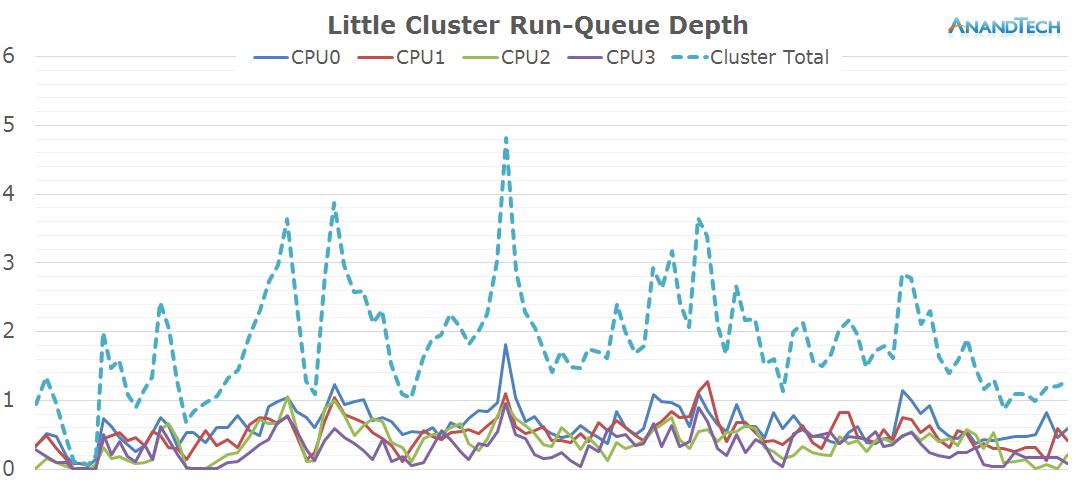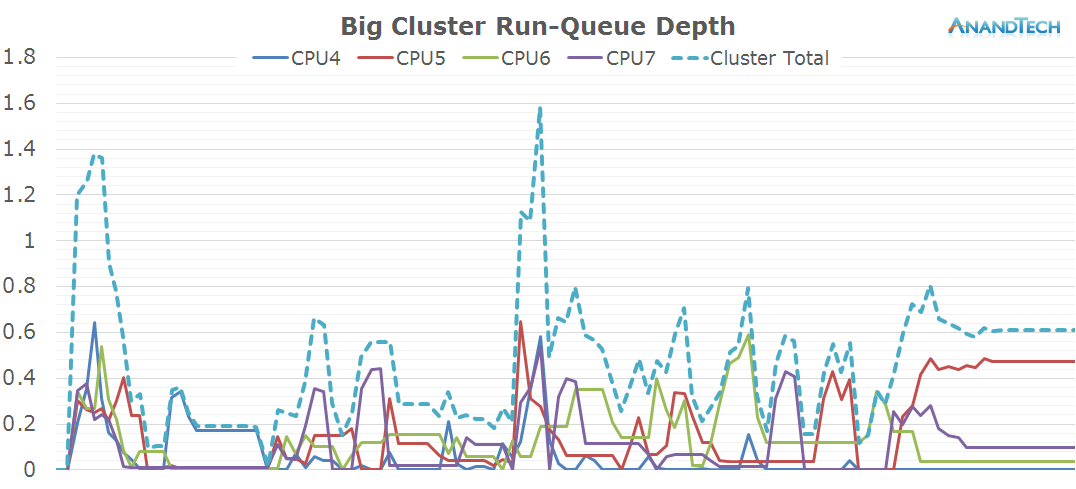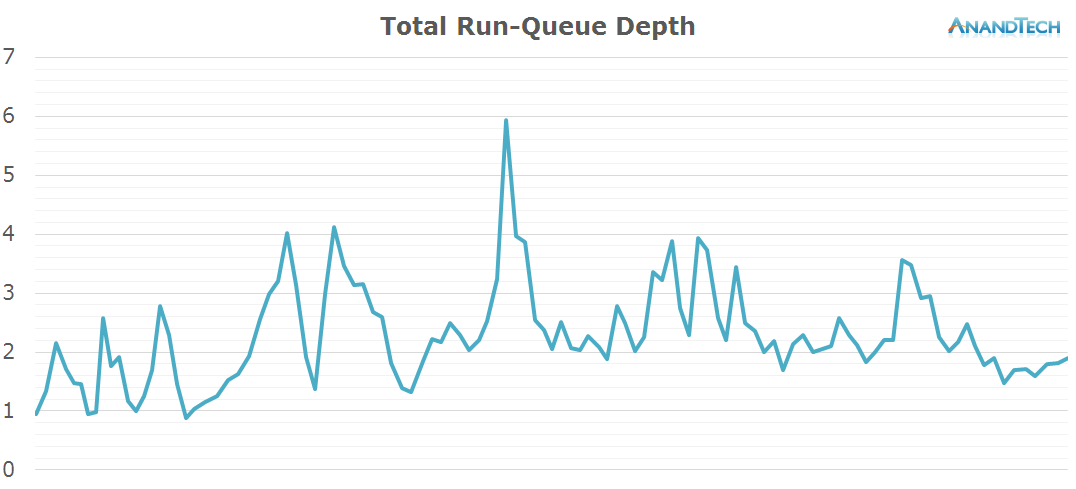The Mobile CPU Core-Count Debate: Analyzing The Real World
by Andrei Frumusanu on September 1, 2015 8:00 AM EST- Posted in
- Smartphones
- CPUs
- Mobile
- SoCs
Play Store Open & Scroll
The little cores all have significant load placed onto them. It looks like the app multi-threads well in this scenario and the little threads are well fitted to accomodate the load that is placed onto them.
Surpsingly, we also see the big CPUs having some continuous load. The app launch itself triggers the big cluster to go to full speed of 2.1GHz and migrate threads onto all 4 CPUs. Scrolling through the page also loads at least 1 significant big thread. The CPU's frequency remains quite moderate though as we only see some small bursts to up to 1GHz while the rest of the time the big cores idle on the minimum 800MHz frequency.
Overall, the Play Store app also seems to be optimized and aimed for 4-core designs. Here big.LITTLE seems to work well as we see a mix of small threads with a mix of big threads running concurrently on both clusters.

















157 Comments
View All Comments
nightbringer57 - Tuesday, September 1, 2015 - link
Very interesting article, much more favourable to multi-core designs than I would have thought.Each article page must have cost an insane amount of time. However, I still feel like some more information could have been useful. This article is geared towards real-world use cases, but I think it would be interesting to repeat this analysis on a few commonly-used benchmarking apps. I feel like this would be interesting to compare them to real-world uses and may help understanding the results.
ingwe - Tuesday, September 1, 2015 - link
Yes that would be very interesting. I am always curious about how synthetics actually compare to more real world applications.Azethoth - Thursday, September 3, 2015 - link
Every single synthetic I have ever seen vastly exaggerates the benefit. I would be interested in an actual real world use case that actually matches a synthetic. It would blow my mind if there are any.Andrei Frumusanu - Tuesday, September 1, 2015 - link
I'll do a follow-up pipeline on this if the interest is high enough.bug77 - Tuesday, September 1, 2015 - link
High enough +1.Please do the follow-up.
tipoo - Tuesday, September 1, 2015 - link
I'd definitely be interested.Drumsticks - Tuesday, September 1, 2015 - link
Yes! This would be neat. Also, great article!ThisIsChrisKim - Tuesday, September 1, 2015 - link
Yes, Would love a follow-up.HanakoIkezawa - Tuesday, September 1, 2015 - link
I'm not sure of the practicality, but I would love to see a follow-up with Denver k1 and the A8X to see how lower core count out of order and in order SoCs are handled.This seriously was a fantastic article Andrei!
kspirit - Tuesday, September 1, 2015 - link
Yes please! +1